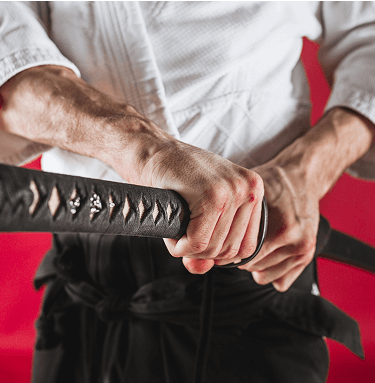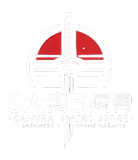Experience the Legacy of the Naginata
Naginata is a polearm with a one-edged curved blade attached to a wooden shaft. It’s the emblem of the onna-musha and onna-bugeisha, two groups of Japanese female warriors. The sword was initially crafted from tamahagane steel, while the shaft was made of lacquered wood.
Our Naginatas: Traditional Polearms Forged for Heritage
- Master Craftsmanship: We handcraft and polish each naginata using traditional methods to ensure the curved blade and wooden pole have a distinct shape and balance.
- Fight Ready: Each naginata is made for practice, tournaments, or martial arts.
- Traditional Materials: Our naginata blades are made of high-carbon steel and the pole from lacquered wood, offering a razor-sharp edge and long-lasting handle.
Sophisticated Cultural Symbols
A naginata adds a sense of mystery to any collection. It's an elegant yet deadly blade, best suited for martial arts cultural enthusiasts. It's not just a weapon but also a symbol of honor and power. Our craft of the naginata is meticulous, ensuring each wielder embraces the martial way of life of the onna-musha and onna-bugeisha.
Onna Musha and Onna Bugeisha
Onna-musha were female warriors who protected their clans and homes, at times fighting alongside samurai. Onna-bugeisha were well-educated noblewomen who learned martial arts to protect their families and homes when men were away at war.
The naginata was a weapon of choice because of its long reach and lethal blade. Over time, it became a symbol of female martial tradition in Japan that was passed on through training. The onna-mushas' and onna-bugeishas' legacy continues today through naginata and naginatajutsu.
Choosing the Right Naginata for You
When selecting a naginata, consider the following:
- Blade size
- Blade material
- Pole material
- Pole length
These variables affect the balance and adaptability of the weapon when it comes to different styles or training levels. A pole with greater length offers extended reach but is harder to manage because it requires greater power, while a lightweight stainless steel blade is easier for inexperienced users to handle. On the other hand, traditional hardwood poles and carbon steel blades may be appealing to culturalists or experienced practitioners seeking authenticity. Ultimately, select a naginata suitable to your training goals, physical ability, and preference.
The blade you go for will be dependent on your usage. Will you train with your naginata? Is it a decorative display piece?
- Training Naginata: Most appropriate for cosplayers and martial artists. Select lighter models with blunt or wooden blades that are adequate for practice.
- Decorative Naginata: Ideal for display and collectors. Look for lacquered poles, elaborate blade designs, and historically accurate details.
- Functional Naginata: Ideal for collectors and martial artists. Look for forged steel blades.
Each piece in our collection offers a blend of form and function. It’s designed to pay homage to the history of the legendary naginata.
FAQs on the Naginata
What Was the Naginata Used For?
The naginata was used in horseback or foot combat as well as personal defense. Owing to the broad sweep of the naginata, it was effective against two or more men and cavalry forces. It afforded female samurai and warrior priests protection and respect as martial icons.
Is the Naginata Better Than a Spear?
A spear is larger and provides more reach. It is optimal when thrown with power to a target at a distance. A naginata, on the other hand, is smaller and has a lethal slicing ability. The curved blade can hook and slash opponents at great speed.
Is Naginata a Glaive?
The naginata is similar to a glaive in form and application. Both are single-edged polearms with the blade fixed atop the end of a wooden stave. While the naginata boasts a curved blade and unmistakable Japanese origin, the glaive is of European lineage and has a straight blade. Despite these separate cultural roots, both weapons do much the same thing on the battlefield.
Who Uses a Naginata?
In historical times, the naginata was employed by onna-musha and onna-bugeisha, samurai warriors, and Buddhist warrior monks. Today, the naginata is used by martial practitioners of naginatajutsu.
Why Was the Naginata a Woman's Weapon?
During the peaceful Edo period (1603-1868), weapons became useless as war tools and found a new function in defense at home. Noble women started using the naginata to defend their homes, and the weapon became an indicator of status. By using it this way, onna-musha and onna-bugeisha made the naginata seem like the ideal weapon for a woman.
Add a Naginata to Your Collection
We have an assortment of authentic polearms for your collection. Purchase our naginata swords and become a guardian of years of tradition and good craftsmanship.
Want to add other traditional Japanese swords to your collection? We also offer a wide array of authentic wakizashi swords, and tachi swords.
Want The Real Thing? Grab Your Sword Today
These swords hit differently. Sharp, solid, and hand-forged by people who love what they do.
"Exceptional Craftsmanship and Unmatched Quality"
"I've never seen such an exquisite katana. The craftsmanship is outstanding, and it feels like a true work of art. Perfect balance, sharpness, and attention to detail.
David M.

- Opens in a new window.
